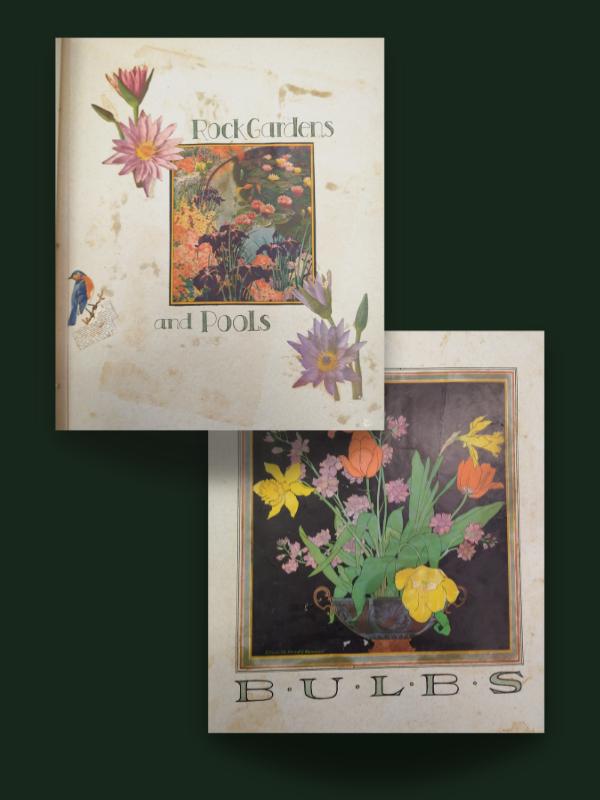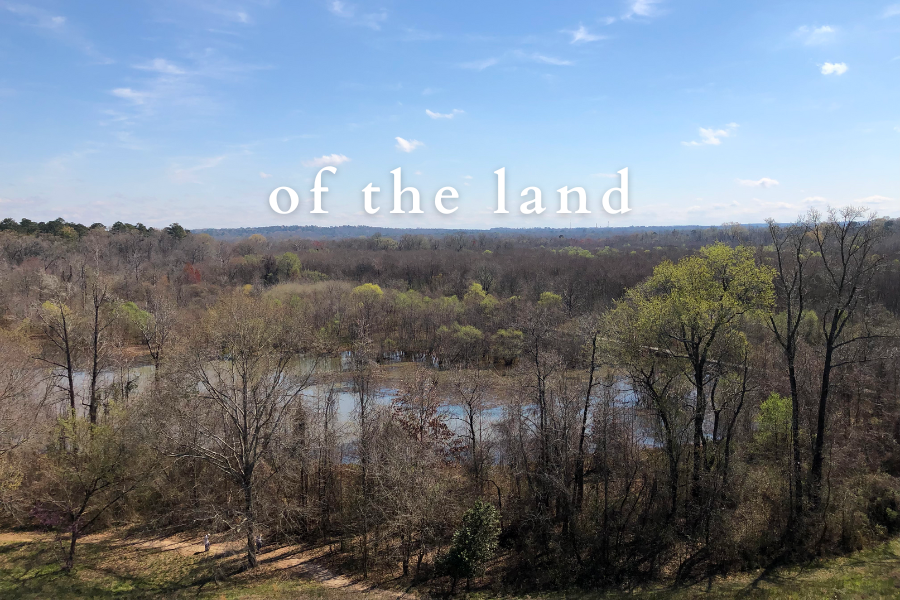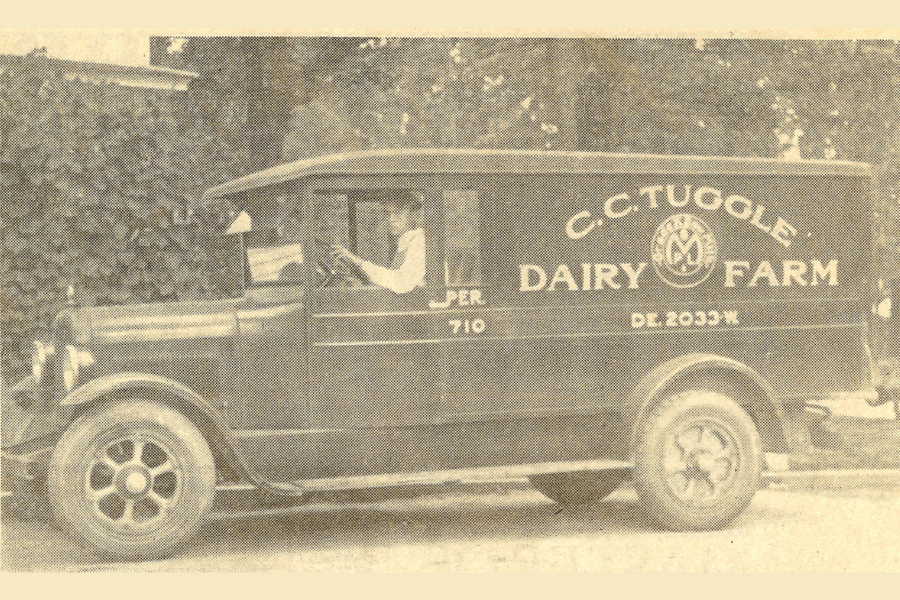Garden Club Scrapbooks: Images from DeKalb Gardens
Garden Club Scrapbooks provide advice, history, and art.
By Marissa Howard, Programs and Membership Coordinator
Garden Club scrapbooks are works of art. People have created scrapbooks for centuries; they are a way to document daily life, significant events, loved ones, personal memories, and more. Scrapbooks were the blogs and vlogs of their time.
The Ladies Garden Club, the first in America, was founded in 1891 in Athens, Georgia. Popularized all over the United States, garden clubs were manifestations of the broader social and political Women’s Club Movements of the 18th and 19th centuries.
The 1920s saw budding growth in local garden clubs that were in full bloom by the 1930s. Businesses began monetizing this opportunity and offered free classes to women. One was a series entitled the “Constitution’s Garden School,” which was sponsored by the Atlanta Constitution and featured fashion shows by Sears, and classes taught by Decatur horticulturist and businesswoman Fletcher Pearson Crown. These schools allowed women the space to make a career of homemaking, and impress their husbands.
“…soon, he will be bringing the office force out to see what ‘we’ have planted and steps ‘we’ have made in ‘designing a garden’.”
Fletcher Pearson Crown, Atlanta Constitution, October 30, 1935.
Gardens have always been a projection of wealth, dedication, and creativity. The garden space was becoming a women’s domain.
The Garden Club Scrapbook Collection held by the DeKalb History Center, covers years from 1932 – 1972. Each club had a specific member in charge of scrapbooking. Careful consideration was put to artwork, decoration, and information provided in the club’s scrapbook. Each club had a specialty and focus, often on specific flowers. Gardening trends are reflected in the landscaping and floral displays.
These clubs were all white and populated by mid- to upper-class women. There is a history of non-white garden clubs, however, resources are limited at the DeKalb History Center. To learn more about Exploring Gardens and Cultural Landscapes of Black America, explore the Cherokee Garden Library’s initiative.
The images in garden club scrapbooks tell the wonderful story of historical landscaping. An overlooked resource, these scrapbooks, and images, can help to tell the history of your property.
Garden Clubs featured in this blog are:
- Parkwood Garden Club, Hostess Miriam Kreuger greeting guests at her home at 230 E. Parkwood Road.
- Glenncrest Garden Club Scrapbook, 1955-1956. Landscaping “to do” lists were documented and photographed like this example from Mrs. Thomas Elliott, at 649 E. Ponce de Leon Avenue, Decatur, GA. Notice the change from the earlier photos that showed women planting Dogwoods in fur coats. Mrs. Thomas is proud to be photographed in work clothes holding shovels. She was also experimenting with organic gardening and leaf compost.
“A Garden Club Quite the Clever Thing for the Women”
“The dear women have watched their husbands reap the advantages of farmers’ clubs too long to remain in the background…they see that upon their frail shoulders and in their fair, delicate hands rests much of the responsibility of raising home supplies…”
“The women are dead in earnest, and it is safe to say that garden clubs are certain to be the “fad”. …these clubs is to awaken a deep interest among women for developing their gardens, and bringing them to watch and superintend [sic] more vigilantly their hired gardeners.”
Atlanta Constitution, January 30, 1892.
- Image of East Lake Garden Club President Mrs. J.J. Nicholson (Marie) and her home, Rosewood, at 2740 Alston Drive SE.
- Members of the East Lake Garden Club put on a show and competition.
- East Lake Garden Club. (top) Mrs. Keith Conway’s Garden on Glenwood Ave across form East Lake Golf Club. (bottom) A central focal point, mass plantings, and hard brick border are pictured in Lucy Swanson’s garden at 246 Daniel Avenue.
A Woman’s Touch
Beautification of civic spaces became the mission of these clubs, which were frequently praised by men-led business organizations for bringing charm and value to public spaces.
- East Lake Garden Club, 1936-1937. Planting Dogwoods along Alston Drive. The club later mentioned most of the trees did not survive. Notice the fur coats and suspicious rip in the photo.
- Parkwood Garden Club, 1962. Installation of the neighborhood sign and beautification of the triangle park on Scott Boulevard and W. Ponce de Leon.
- Glenncrest Garden Club beautification project, 1955-57.
Travel and Advice
Towards the end of the 1930s, European tours were the ultimate pilgrimage for any home gardener. A woman’s European garden tours might be followed by a talk at the local club, with the sharing of paraphernalia and inspiration. Mrs. Marie Nicholson, the “Tulip Lady” traveled to the Netherlands, and Fletcher Pearson Crown traveled to Switzerland to explore alpine gardens.
Pamphlet from a member of the East Lake Garden Club after her trip to Germany in 1937.
Garden Trends Seen in Scrapbooks
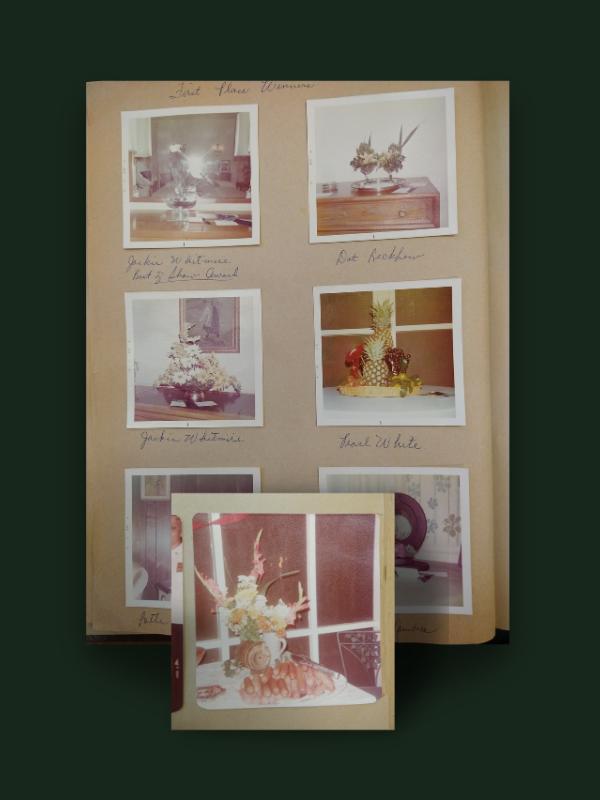
Parkwood Garden Club Floral Arrangements and social parties, 1972.
Is anything more 1972 than these floral arrangements utilizing pineapples, martini glasses, and tropical plants? I assume the plain boiled hot dogs are not part of a floral arrangement, but carefully arranged and displayed for hungry guests. Interior design choices are also revealed and may stir nostalgic memories or bemusement.
East Lake Garden Club, 1938.
Easy to grow bulbs have been popular for centuries. Massive plantings of a single variety of bulbs, particularly tulips, were extremely popular. Today’s gardens feature texture differences, color variation, and soft borders. According to this scrapbook, formality, mass plantings, and defined borders were on trend.
Rock Gardens were all the rage in the 1930s. Homeowners brought in granite, soapstone, and other materials to be featured in their gardens or to create a maintenance free area.
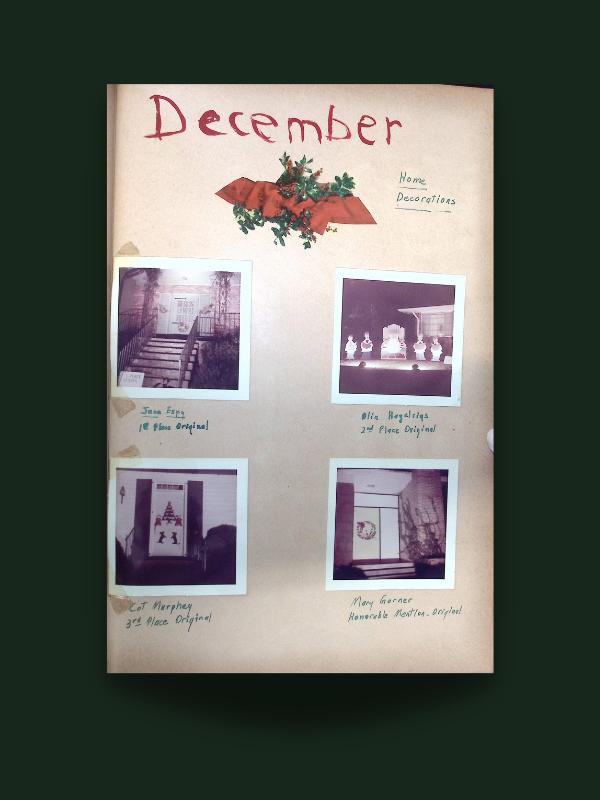
Parkwood Garden Club Home Decorations.
Garden Scrapbooks as Art
- Parkwood Garden Club Scrapbook cover image.
- Parkwood Garden Club Installation of Officers, 1958-1959.
- Briarcliff Woods Garden Club.
- East Lake Garden Club History





